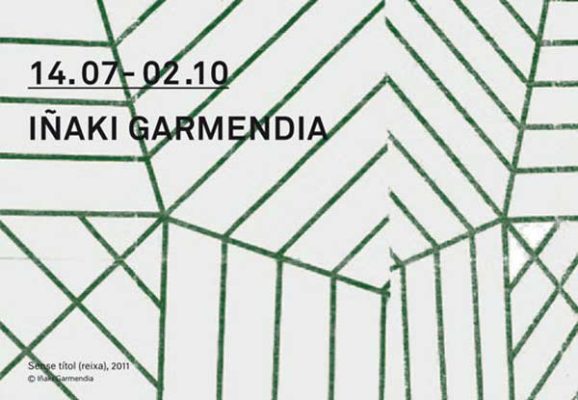Search
To search for an exact match, type the word or phrase you want in quotation marks.
A*DESK has been offering since 2002 contents about criticism and contemporary art. A*DESK has become consolidated thanks to all those who have believed in the project, all those who have followed us, debating, participating and collaborating. Many people have collaborated with A*DESK, and continue to do so. Their efforts, knowledge and belief in the project are what make it grow internationally. At A*DESK we have also generated work for over one hundred professionals in culture, from small collaborations with reviews and classes, to more prolonged and intense collaborations.
At A*DESK we believe in the need for free and universal access to culture and knowledge. We want to carry on being independent, remaining open to more ideas and opinions. If you believe in A*DESK, we need your backing to be able to continue. You can now participate in the project by supporting it. You can choose how much you want to contribute to the project.
You can decide how much you want to bring to the project.

Diverse questions converge in the works of Iñaki Garmendia. Youth subcultures and their modes of leisure, tensions between the local and the global, an awareness of the inherent impossibility of language… The images acquire a certain level of autonomy, and with it the capacity to reinvent themselves. The forms of treatment are varied and at times, contradictory. The approach involves a prior acceptation of the fragmentary, and an endeavour to withstand the incomplete.
There is no sign that hasn’t already existed. If not, it would be something else. Everything refers to something else. Repeats.
A monitor elevated fairly high on a plinth shows a video that plays with the physiognomy of a green Orbea bicycle. The mechanical “body” appears fragmented into bits that compose a totality that the camera view makes impossible. There is a microscopic fascination for the forms of the bicycle: close ups showing disconnected bits, as the camera plays at eliminating the distance, focusing/defocusing. The image is subtle and hyperrealist at the same time. Subtle because it strokes the object. Hyperreal, because it moves in on it, enlarging it, operating within the confines of a regime of obscenity.
For Baudrillard the obscene implies the loss of every scene. Here, the form pure and empty. Absence of narration and absence of the scene. The excessive closing in ends up establishing an insurmountable distance. And the excess of truth is too much to be true: mediated by the camera and the constructed subjectivity of the creator.
If S.T. Orbea (Orduña) (2007) opens the exhibition and situates itself on the side of absolute visibility, the last piece, Bolueta (2011) establishes an interesting counterpoint. As opposed to the invasive character of the close up, Bolueta opts for the ambiguity of presence and absence. Two cameras hide at night, in front of the exit of a disco. The videos show what was filmed, without any cuts and no doubt without any intervention. The notions of surveillance and/or voyeurism are evident and are reinforced by how it is displayed in the exhibition: the monitors placed on two plinths that are placed high above he or she who contemplates them.
Here there is a stage or at least that’s what it seems. The camera is stationary, abandoned to chance that determines what falls within the field of vision (always fragmentary). Something strange happens, sinister, related to the place where the events recorded took place: something that has to do not with questioning, but with the recognition and acceptance of a regime of surveillance. The image is familiar, it could be right here, could be yesterday, it could be me or even you.
The lack of focus causes discomfort and excites the voyeur, quite the opposite of the explicitness of porn. Things and people are not quite visible, the conversations just out of reach, impossibility lying behind the scene. This “truth” that can’t be seen leads once again to the comparison of the two regimes of visibility that the two pieces explore. Which is more real, the hyperreal “body” of the bicycle or the ghostly images that populate the exit of the discotheque?
The videos of Garmendia operate from within an amalgam of signs. They take advantage of the supremacy of the moving image in the era of mass media, endeavouring to question the prevailing forms of representation, exploring the limits and possibilities of the very act of representation. The signs are multiple, and as ever, we have already seen them in other places. The portrait of youth subcultures and their forms of leisure and amusement under the auspices of post-capitalism, referents that explore the local and operate from the global, music, the impossibility of language… The signifier doesn’t pertain to us it escapes us, having a structure of its own.
The pure and empty form of S.T. Orbea (Orduña) is perhaps not so empty. Are there not signs of the representation of the bicycle itself, in its green colour, in the title of the piece that refers to the model of the bike and to the Biscayan locality that Garmendia indicates afterwards in one of the maps of the exhibition?
The recognition of certain signs depends sometimes on the degree of familiarity with a context. A recognition that is not necessary but on occasions is impossible to avoid. As in the photographs, which portray different discotheques of the Basque geography or more specifically, its architecture. Apparently empty images, of a taxonomic nature, that seem simply to document a genre: the architecture of discotheques (if such a thing exists). Diurnal images that de-contextualise the evident nocturnal functionality of these spaces. The buildings appear in uninhabited places, surrounded by the characteristic green of the Basque mountains. The question of colour seems to have a certain importance, given that the artist realizes two series of photographs from practically the same viewpoint, the fundamental difference lying in the colour of one as opposed to the black and white of the other. The architecture of the discotheques documents itself again in N-634 (2011), a diorama constructed out of the trajectory of the road from which it takes its name, where several of these places are assembled.
Jazz-berri, Non Stop, Txitxarro, Itzela…places of pilgrimage for some of the Basque youth at the end of the nineties. A local version of “disco cruising, (common in Valencia)” in which ETA identified the new opium of the people. Techno, ecstasy and tuned cars distanced the Basque youth from the political fight and from revolution. On the 10 September 2000, Txitxarro, one of the most popular discotheques of the time went up in smithereeens.
The photographs show the state of the discotheque after the explosion of the bomb. But Garmendia hovers specifically on the closed railings that formed the entrance to Txitxarro. The straight and diagonal lines of the metallic bars that make up its structure are transferred to paper and submitted to a process of relative abstraction. Relative in that the drawing depends first on its direct relation with the door, and then on the degree of recognition of its nature, as a de-contextualised sign, by the spectator. Too many dependencies? The drawing stops being abstract when it is recognised as railings. But it is when this recognition doesn’t happen. For it renounces being a sign, to become, to a certain extent, a non-associated signifier. It acquires autonomy, so much so that it forms the image of the exhibition. Empty form, pure form or an image charged with connotations.
The doubt remains. It hits head on questions relating to the subjectivity that lies behind every analysis. The existence of multiple layers of interpretation. With questions that concern the ideological weight that we confer on every form as a supposed carrier of meanings.
Everything consists in giving the images a twist, making them reverberate exploring their structures in order to destabilize them. In disassociating the signified from the signifier, endangering the sign, to isolate referents. But constantly, time and time again, undoing what has been done and doing it again. What is left is the fragmentary. And it transmits a strong sense of immediacy.

Maite Garbayo is a writer and researcher. Art history, feminist crticial theory and pyschoanalysis are a few of the tools of her trade. She combines her research and writing with periods of teaching. Currently, she is working on her doctoral thesis and is the editor of the magazine {Pipa}.
"A desk is a dangerous place from which to watch the world" (John Le Carré)